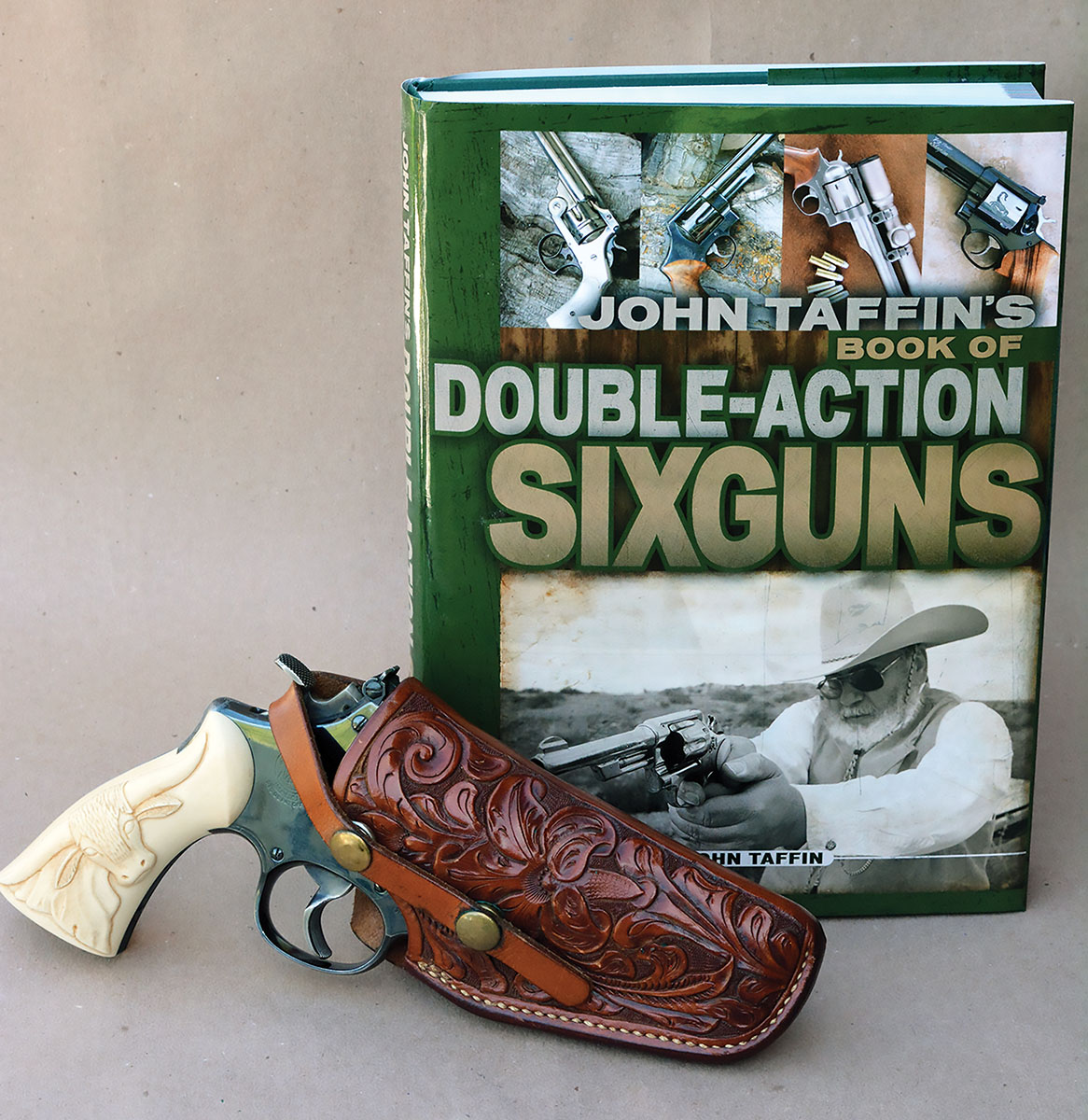From the Hip
Palmetto State Armory Dagger Compact 9mm
column By: Brian Pearce |
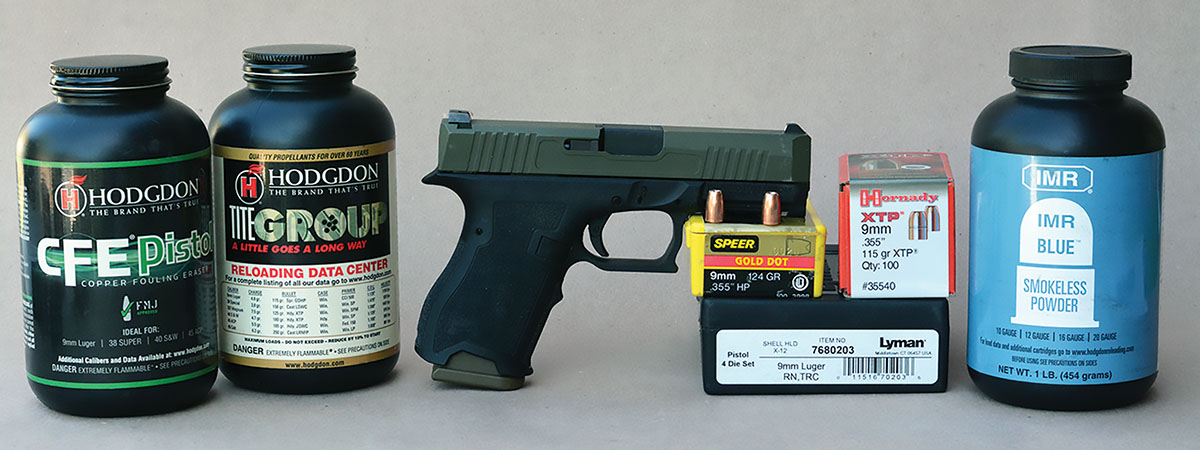
Beginning in 2008, Jamin McCallum established Palmetto State Armory (PSA) headquartered in Columbia, South Carolina. This is a gun-manufacturing-friendly state known as “The Palmetto State” due to its official tree being the sabal palmetto. PSA offers a variety of firearm types, including rifles and handguns that are 100 percent manufactured in the U.S. and the company boasts of more than 200 employees. PSA is a very progressive company that offers quality firearms at reasonable prices, such as the Dagger Compact 9mm pistol being discussed here.
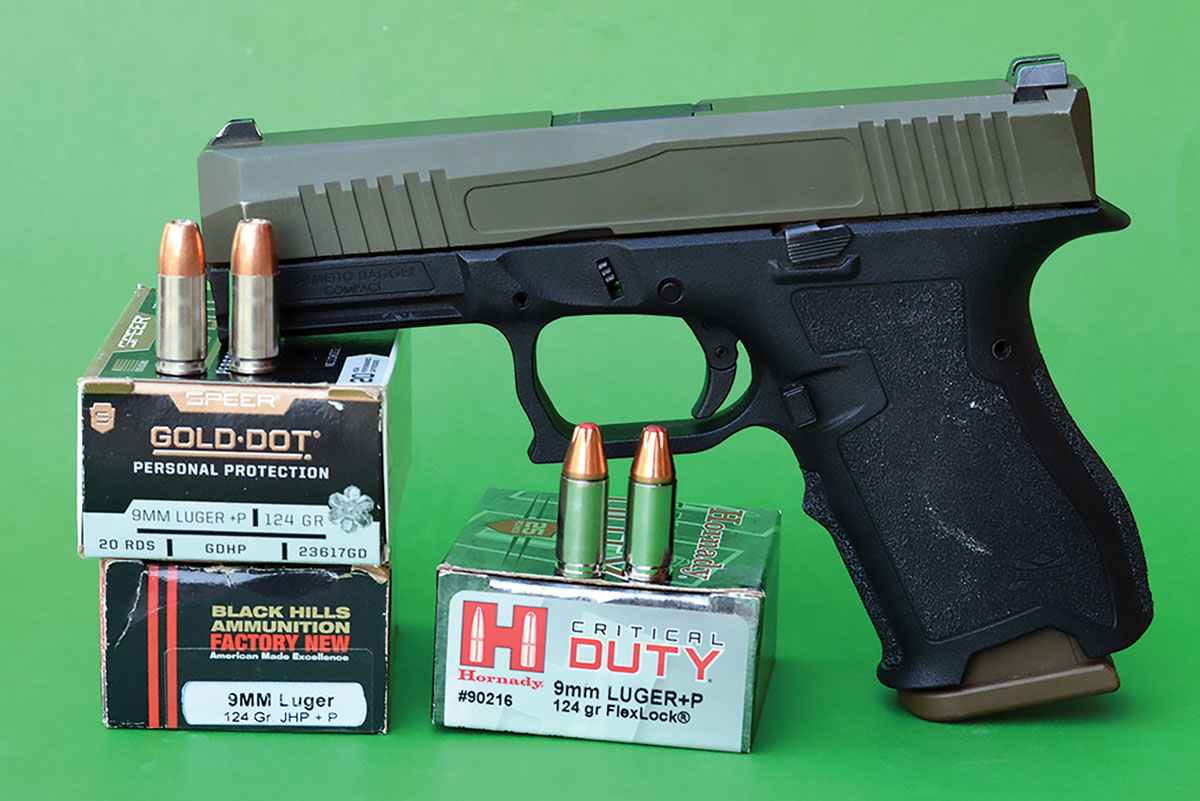
To help understand the significance of the Dagger Compact, we must consider the Glock 19, which, based on sales figures, is probably the most popular 9mm pistol in the world. Its reputation for reliability and durability is outstanding and it enjoys continually strong sales with the military, police and civilians. The Dagger Compact is essentially patterned after the Glock 19 Gen 3 pistol, which many consider the best of all generations. The Dagger Compact is more or less the same size, weight and design and it even shares 100 percent interchangeability with the 15-round magazines, but there are minor changes that many shooters consider improvements.
Naturally, the Dagger Compact features a polymer frame, locked breech, short recoil operation and is striker-fired. The weight is 24.2 ounces with a magazine and 21.7 ounces without. The stainless steel barrel is DLC-coated and measured 3.9 inches long. The stainless steel slide is CERAKOTE-coated in a dark green, but there are color options including the widely popular matte black, which serves to protect the metal and helps resist scratching and rust. PSA also offers a huge selection of upgraded slides with cutouts and custom paint jobs for that custom touch. The polymer frame is black and offers a squared front trigger guard along with an integral cross-slot for mounting accessories.
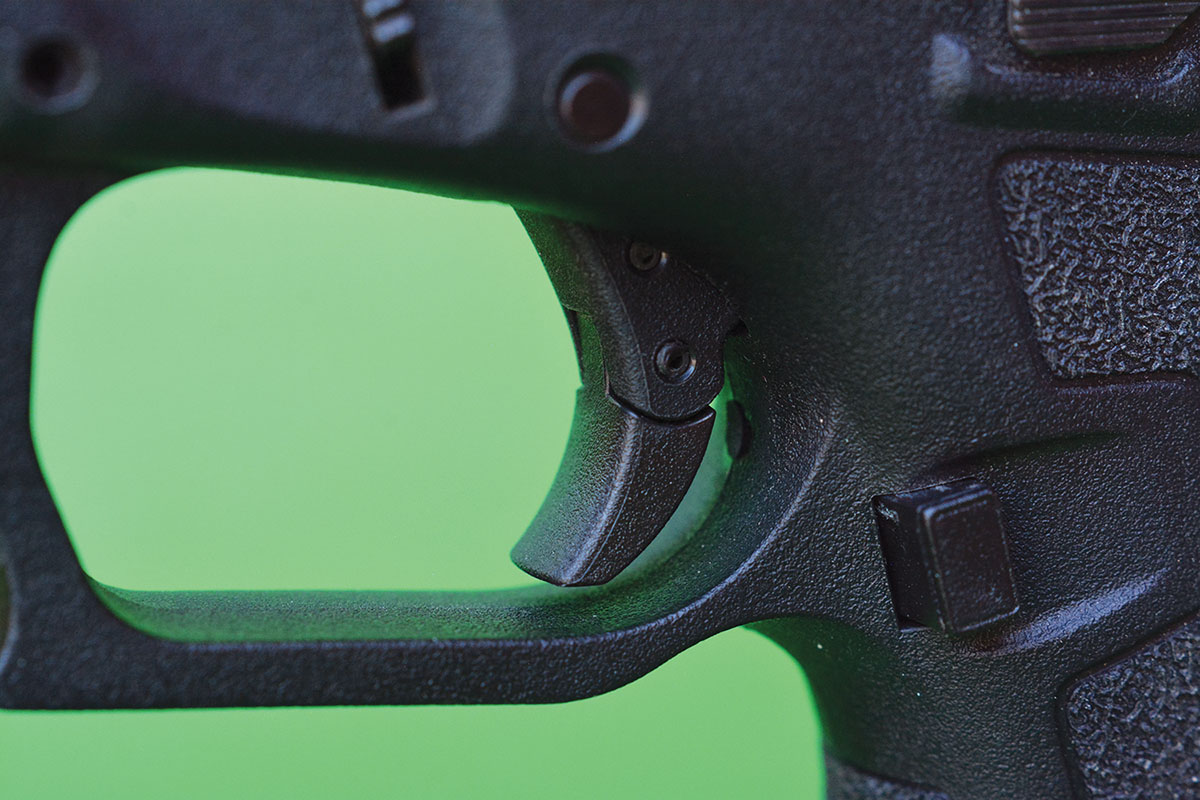
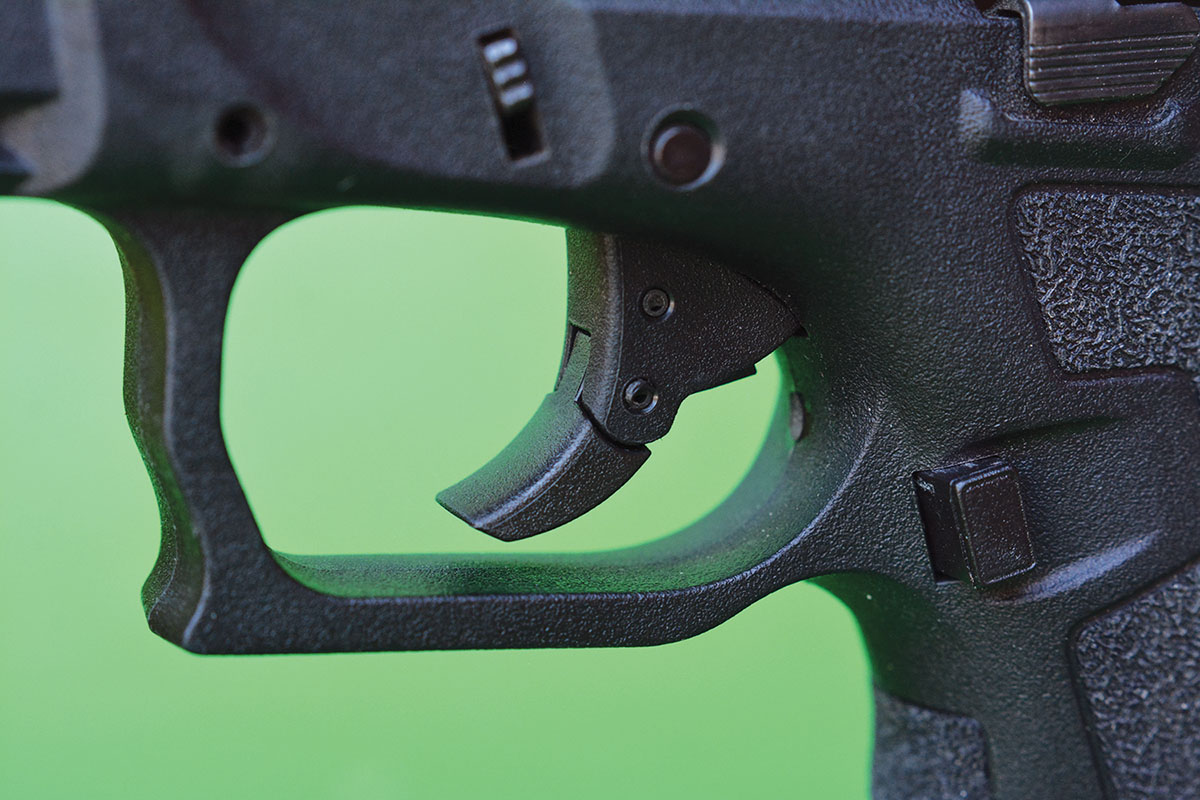
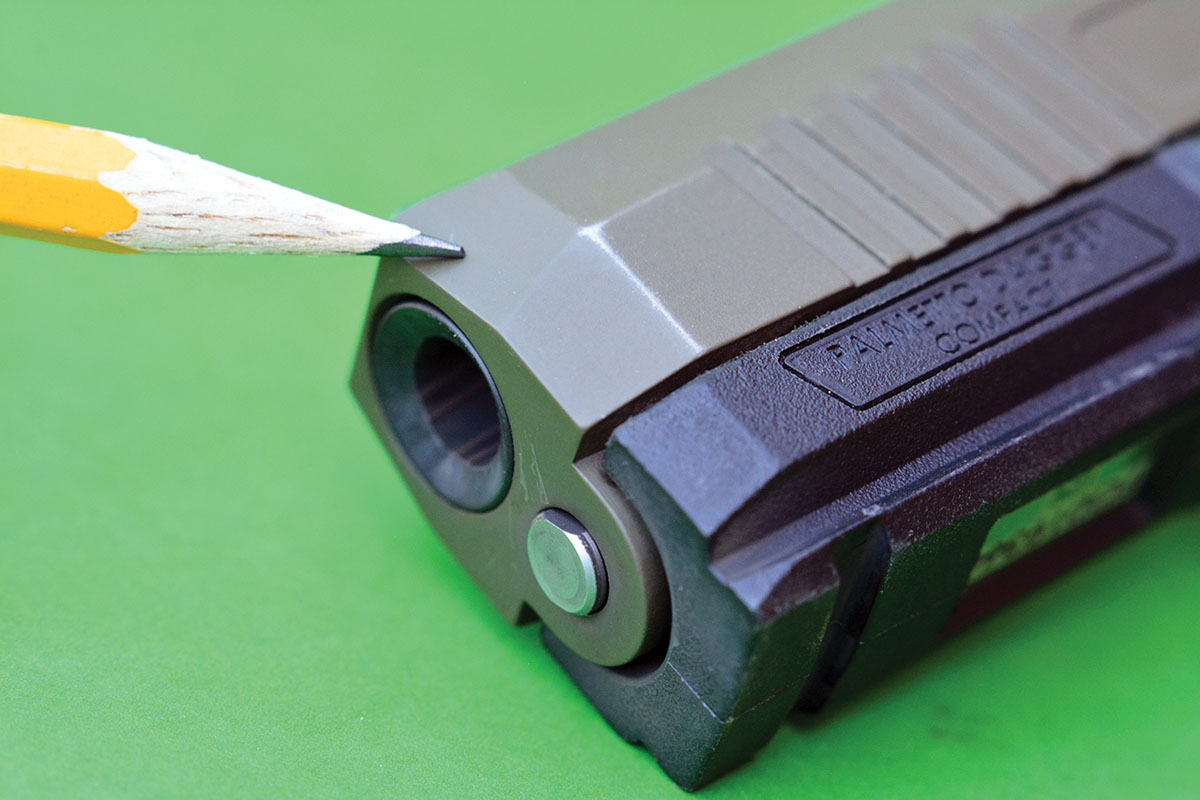
The first standout feature is the frame, or rather the shape of the grip frame, which is notably more rounded (especially at the rear) than the Glock 19 and even has a slight palm swell. The stippling on the sides of the grip frame offers more traction and less slippage. Plus, there are relief cutouts on each side of the bottom of the grip frame. In addition to the traditional rear-of-slide serrations to help give traction to cycle the slide, there are six additional serrations (on each side) located towards the front, which serve to make it easier for some shooters to rack the slide. PSA refers to these as Extreme Carry Cuts and the slide is beveled (aka melted) especially towards the muzzle for easier holstering and is better suited for concealed carry applications.
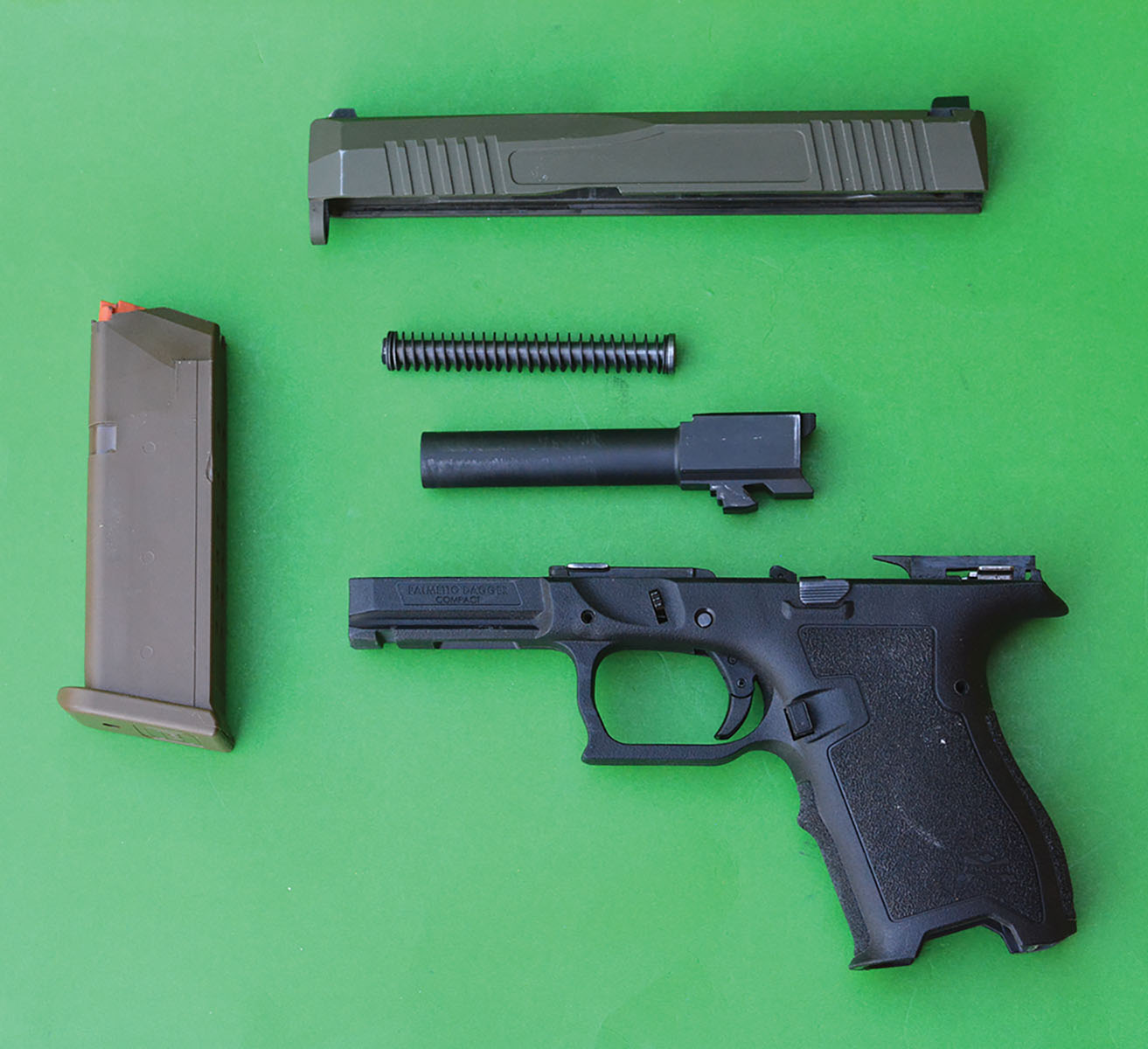
Like the Glock 19, the PSA Dagger Compact has a safety built into the trigger; however, rather than a pivoting piece in the center of the trigger, the lower half of the trigger pivots to accomplish the same effect (see photos) and features a flat face.
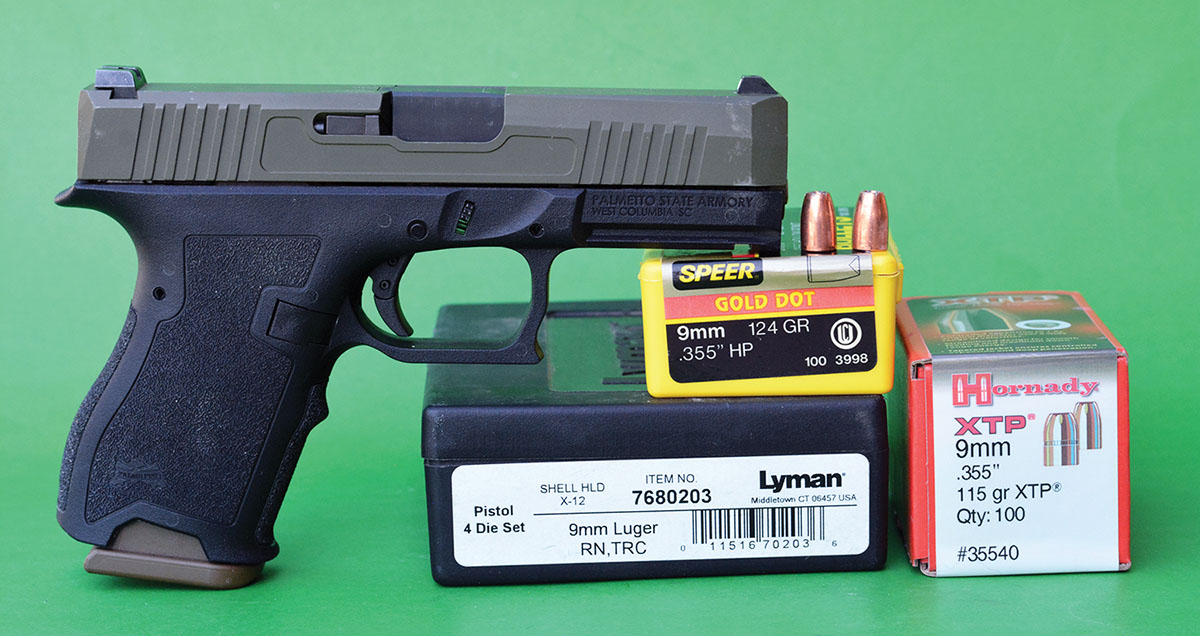
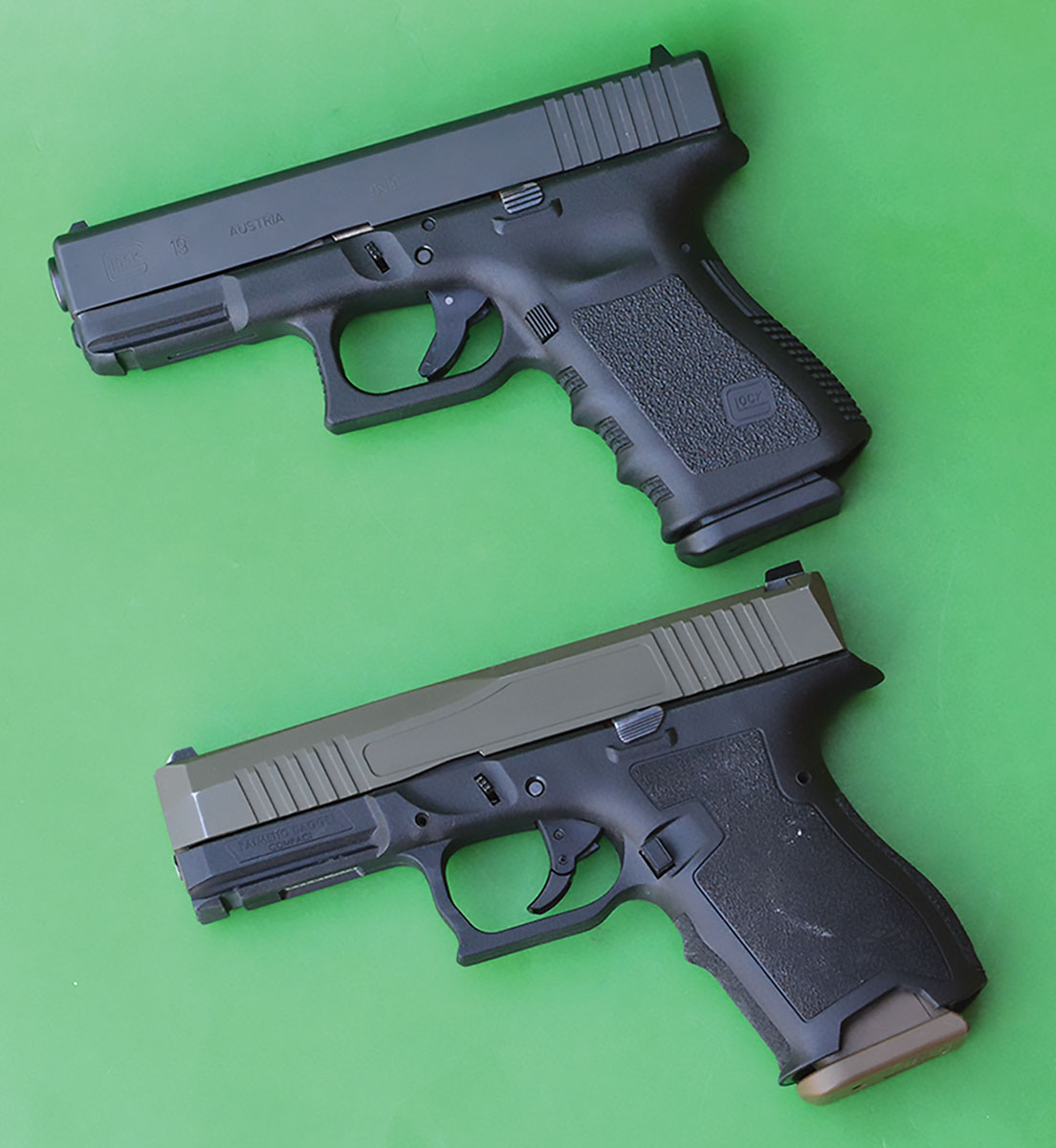
My first impression of the Dagger Compact is very positive as the metal parts exhibit very good machining, the finish is good and it’s comfortable in the hand.
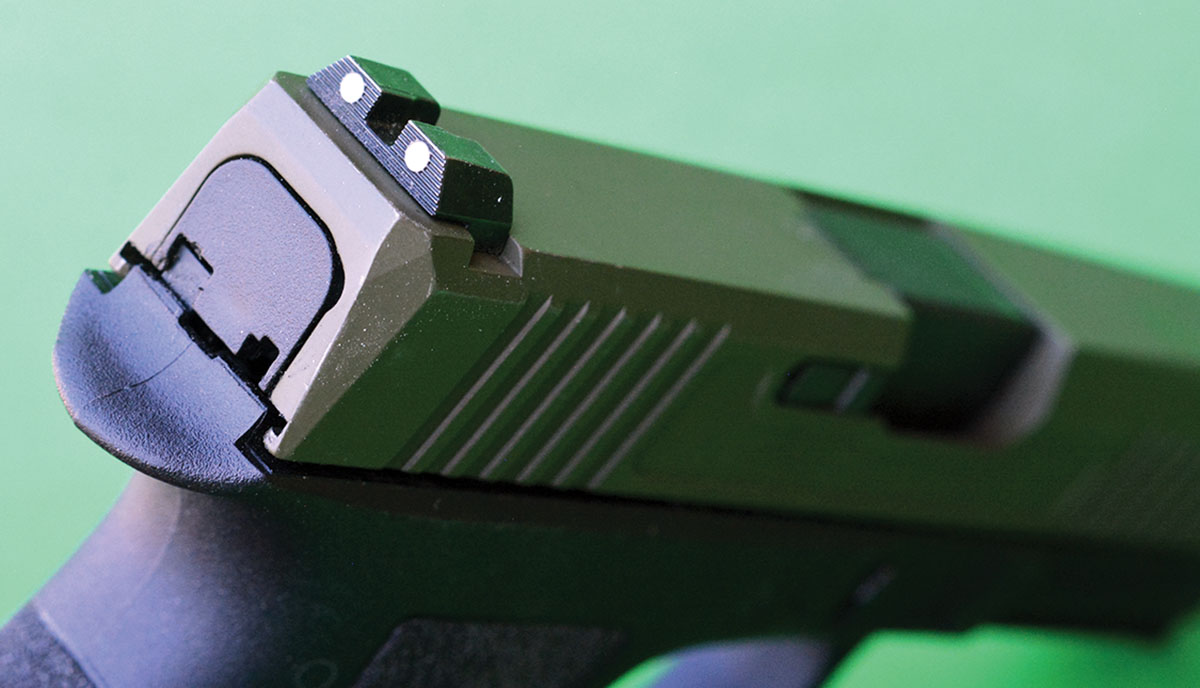
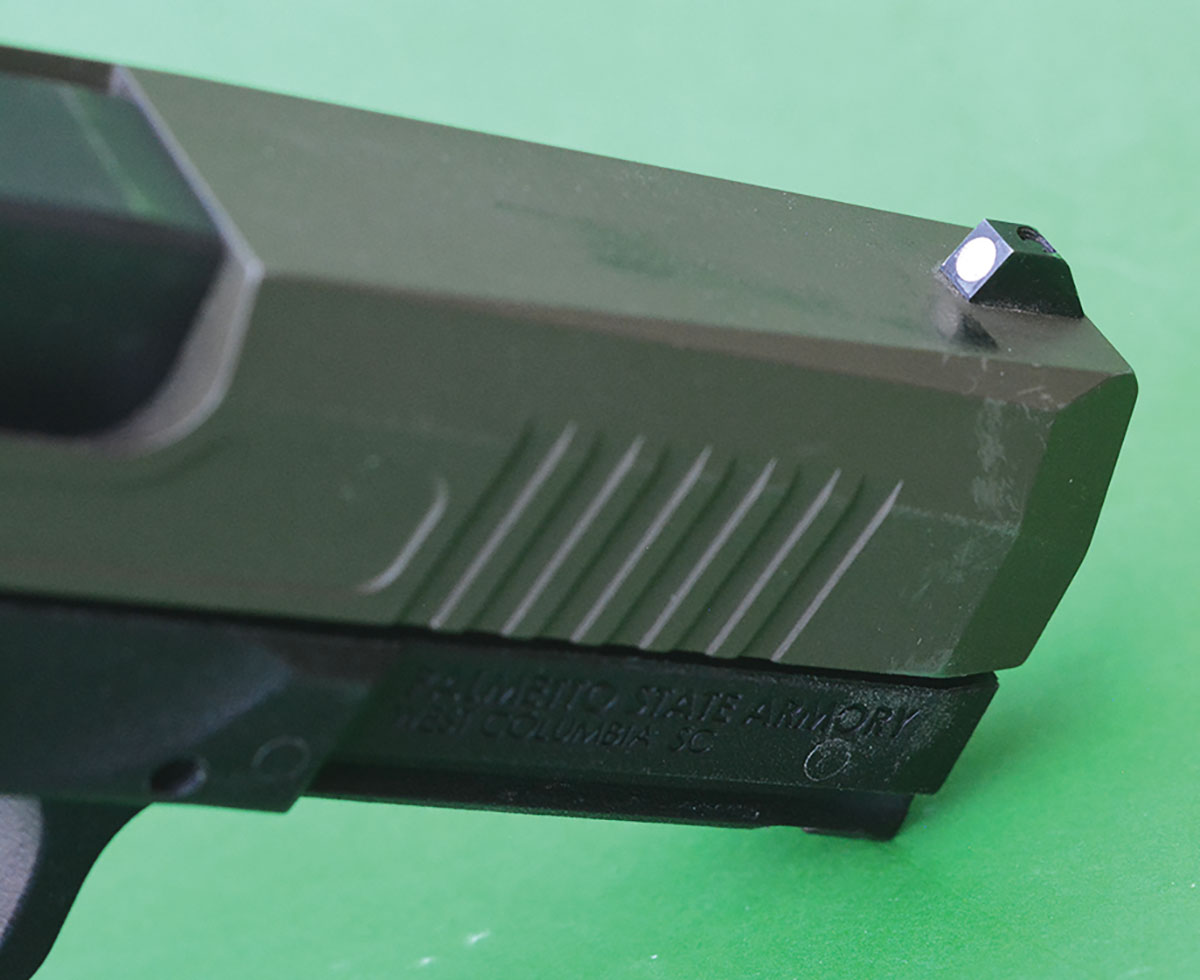
Between 200 and 300 rounds of full metal jacket (FMJ) 9mm loads were fired through the PSA Dagger Compact prior to using defense-style loads, handloads and checking for accuracy. To date, more than 500 rounds have been fired and the Dagger Compact has fired, fed and functioned flawlessly. Not a single malfunction.
Using four factory loads from Blazer, Black Hills, Hornady and Speer, three groups of five shots each, averaged between 1.70 to 3.15 inches at 20 yards with the help of sandbag rests. The tightest group came from Hornady Critical Duty FlexLock +P 124-grain bullets that produced average groups of just 1.70 inches, while the Speer Gold Dot Personal Protection +P 124-grain load averaged 2.05 inches.
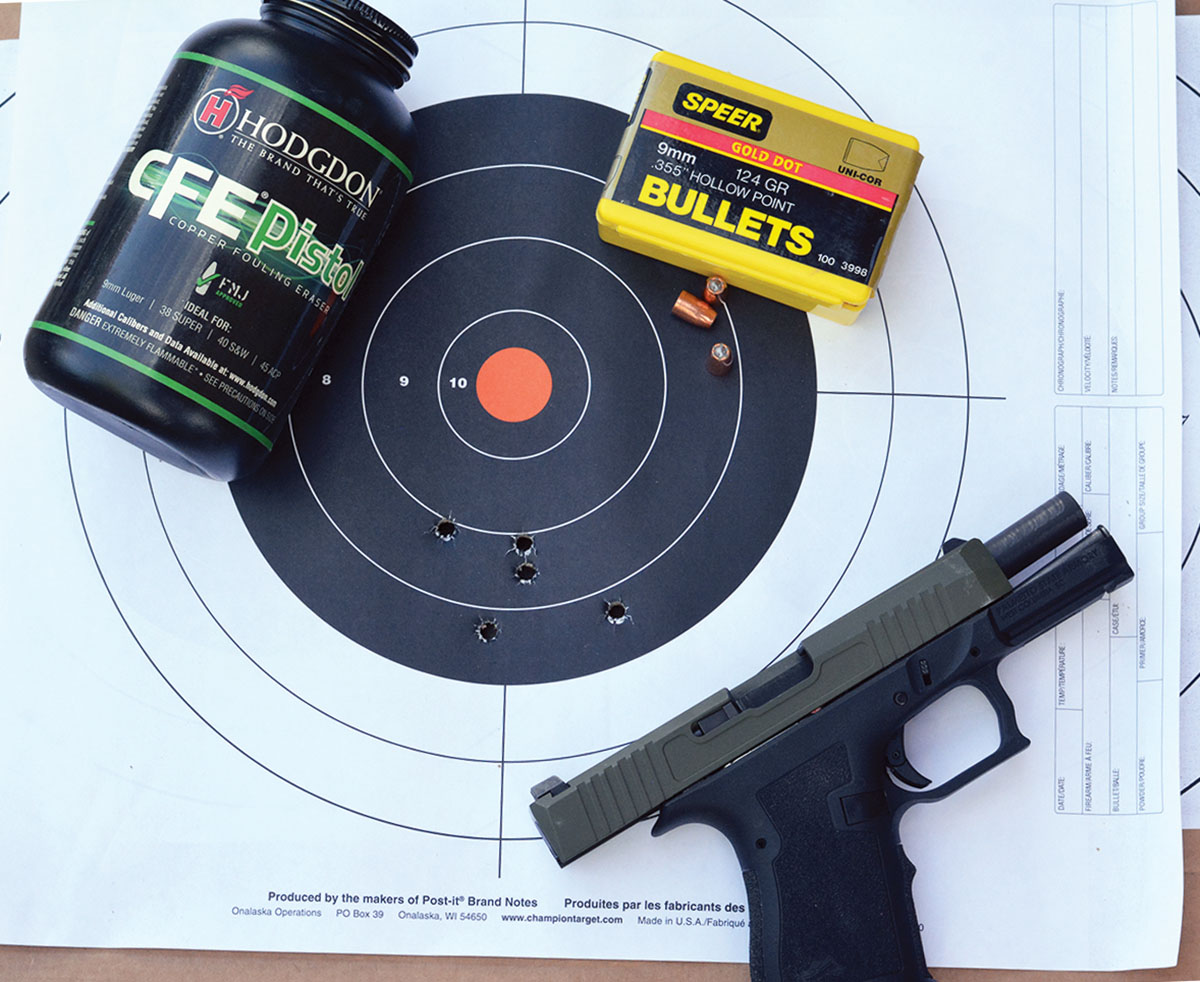
Moving on to handloads that were assembled in new Starline cases and capped with CCI No. 500 primers, the load that gave the best accuracy consisted of the Hornady 115-grain XTP pushed to 1,265 feet per second (fps) using 5 grains of Hodgdon Titegroup powder. The average of three, five-shot groups was just 1.80 inches. The Speer 124-grain Gold Dot jacketed hollowpoint (JHP) bullet pushed to 1,294 fps using 6.6 grains of Alliant Power Pistol powder resulted in an average group size of just under 2 inches. However, the largest average groups produced by handloads were just 2.10 inches, which was oddly enough, observed with three different loads that contained the Hornady 115-grain XTP, the Speer 124-grain Gold Dot JHP and the Nosler 147-grain Sporting Handgun bullets. It seems that the PSA Dagger Compact is not overly sensitive to bullet choice or velocities to produce respectable accuracy.
I was very pleased with the overall performance and accuracy of the PSA Compact Dagger, along with the improved ergonomics. Plus, with a manufacturer’s suggested retail price of just $350, it’s an outstanding value.
.jpg)
.jpg)
John Taffin’s Book of Double-Action Sixguns
It has been more than 40 years since John Taffin and I met and quickly became friends, especially when we discovered each other’s love of all good sixguns, cartridges and loads. In the decades since, we have traveled together to many industry events, hunted big game and tested many sixguns and loads for accuracy and terminal performance.
We have freely shared with each other our experiences and technical information that we have each gleaned as professional gun writers and shooters. I can state that if John said that a gun performed a certain way, then that is exactly how that gun performed. His handgun skills are outstanding, as he shoots like a machine rest. He is deeply trusted and held in high regard by those who have followed his writings. To date, Taffin has authored a remarkable eight books.
His latest book, John Taffin’s Book of Double-Action Sixguns is a highly valuable resource that covers the most important sixguns, beginning with the history of the earliest double-action guns right through present-day versions. As expected, many chapters are dedicated to specific Colt, Smith & Wesson and Ruger revolvers, along with much discussion of calibers; however, select Dan Wesson, Charter Arms and Taurus revolvers are also included. Other notable chapters include “Double-Action Sixgun Leather,” “Double-Action Sixgun Stocks” and “Past Masters of the Double-Action Sixgun.” That last chapter is especially interesting as it captures the history and offers tribute to so many pioneers, experimenters, writers, lawmen and exhibition shooters including Elmer Keith, Rex Applegate, Charlie Askins, Jelly Bryce, John Henry Fitzgerald, Chic Gaylord, Al Goerg, Lone Wolf Gonzaullas, Jim Harvey, Bill Jordan, John Lachuk, Ed McGivern, Bob Nichols, Walter Roper, Phil Sharpe, Skeeter Skelton, Ray Thompson, Walter Walsh, Jack Weaver, D.B. Wesson and Paul Weston.
The book has 35 chapters and 474 pages. It is well written, remarkably illustrated with countless photos and it is in full color. The quality and layout of the book are outstanding and it is printed in the U.S. by Wolfe Publishing Company. (It is also noteworthy that Wolfe Publishing is currently offering John Taffin’s Book of the .45 Caliber and John Taffin’s Book of the .44 Caliber, which are both outstanding works and I highly recommend them.) There is no other book ever written that is so comprehensive on this subject and I am unaware of anyone else who could possibly write such an extensive and accurate reference work dedicated to double-action sixguns. Thank you, John!
This book can be purchased at WolfeOutdoorSports.com.



